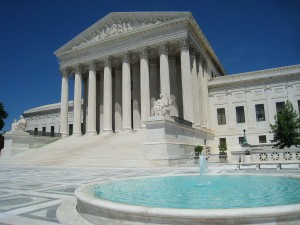Experienced Federal Appeal Attorneys: Competent Representation for Facility Situations
Wiki Article
Demystifying the Process of Federal Appeals: What You Need to Know
Navigating the elaborate realm of government charms can commonly feel like passing through uncharted waters for those unknown with the process. Comprehending the nuances of appellate court jurisdiction, the intricacies of submitting a notification of charm, offering an engaging short, and making a persuasive dental disagreement are essential parts that can considerably impact the outcome of a situation. By untangling the layers of complexity bordering federal allures, people can obtain a clearer understanding into the mechanisms that govern this critical point of the legal system.Understanding Federal Appeals Process
Digging right into the intricate realm of the federal allures process unveils a systematic and organized trip via the judicial system. Federal allures serve as a critical system for examining choices made by reduced courts. Comprehending this procedure is necessary for any person associated with lawful process at the government level.The process typically begins with a celebration dissatisfied with a lower court's judgment filing a notification of allure. This activates a testimonial by a higher court, where a panel of judges evaluates the lawful disagreements offered by both parties. Briefs laying out the lawful reasoning behind each party's placement are submitted, and oral debates might be heard to make clear complicated concerns.
The appellate court's decision is based on a detailed examination of the reduced court's proceedings and the disagreements presented. As soon as the appellate court gets to a decision, it can verify, turn around, remand, or modify the reduced court's judgment, providing quality and finality to the lawful conflict.
Appellate Court Territory Discussed
As we progress from comprehending the federal allures process to studying the intricacies of appellate court territory, a fundamental element comes to light pertaining to the authority and limits of these greater courts in the legal landscape. Appellate court territory describes the range of cases that a certain appellate court has the power to determine and review upon. Unlike trial courts that listen to instances for the initial time, appellate courts are limited to reviewing choices made by lower courts. These choices can consist of judgments from both state and government courts.Appellate courts have territory over certain types of cases, commonly those including lawful errors, step-by-step concerns, or inquiries of legislation instead than factual disagreements. The jurisdiction of appellate courts is usually outlined in laws and laws that regulate the court system. Understanding appellate court jurisdiction is critical for celebrations entailed in the appeals process as it establishes whether a case is eligible for evaluation and the level to which the appellate court can interfere in the lower court's decision.
Filing a Notification of Allure
The preliminary action in beginning the government appeals process involves filing a Notice of Allure with the suitable appellate court. This important paper officially alerts the court and the other celebrations associated with the situation that the appealing event plans to look for a testimonial of the lower court's decision. Filing a Notice of Allure is a stringent procedural need that sets the appellate procedure moving.
When preparing the Notice of Charm, it is essential to make certain conformity with the certain policies and guidelines of the relevant appellate court. federal appeal lawyers. The document must commonly include information such as the situation name, the reduced court's name, the date of the judgment being appealed, and a concise declaration showing the grounds for the allure

Rundown and Dental Argument
In the appellate procedure, providing created briefs and participating in dental arguments play crucial functions in supporting for the appealing party's placement before the appellate court. Briefs are thorough lawful files that outline the celebrations' debates, lawful authorities, and evaluation supporting their settings. These created submissions offer the court with a thorough understanding of the facts of the situation, the pertinent law, and why the appealing celebration thinks the reduced court's choice should be reversed.Complying with the entry and testimonial of the briefs, oral arguments provide the celebrations a possibility to further clarify their positions, resolve any questions the appellate judges may have, and highlight bottom lines from their created briefs. Dental debates are an opportunity for the lawyers to persuade the judges through verbal advocacy and responses to questions from the bench.
Both the written briefs and dental arguments are essential elements of the appellate process, allowing parties to present their case thoroughly and compellingly before the appellate court. - federal appeal attorneys
Getting the Appellate Court Decision
The appellate court's decision is typically supplied in a created style and lays out the court's final thoughts on the lawful issues offered, the thinking behind their decision, and the judgment made. The time structure for receiving the appellate court's decision can vary, however courts make every effort to offer prompt resolutions. Whether the appellate court attests, reverses, or remands the lower court's decision, recognizing the implications of the ruling is vital for all events involved in the appellate process.Final Thought
Finally, the federal appeals process is a facility yet essential action in looking for justice. Recognizing the appellate court territory, submitting a notice of appeal, preparing briefs, and presenting oral disagreements are all crucial parts of this procedure. Inevitably, receiving the appellate court decision can provide clearness and resolution to legal conflicts. It is very important to browse the government charms procedure with persistance and interest to information to accomplish a reasonable result.As we proceed from understanding the government allures procedure to exploring the complexities of appellate court jurisdiction, an essential element comes to light relating to official website the authority and limitations of these higher courts in the legal landscape. Appellate court territory refers to the range of situations that a particular appellate court has the power to determine and examine upon. Unlike trial courts that listen to instances for the very first time, appellate courts are limited to assessing choices made by lower courts. Recognizing appellate court territory is important for parties entailed in the charms process as it establishes whether a situation is eligible for testimonial and the extent to which the appellate court can interfere in the lower court's decision.

Report this wiki page